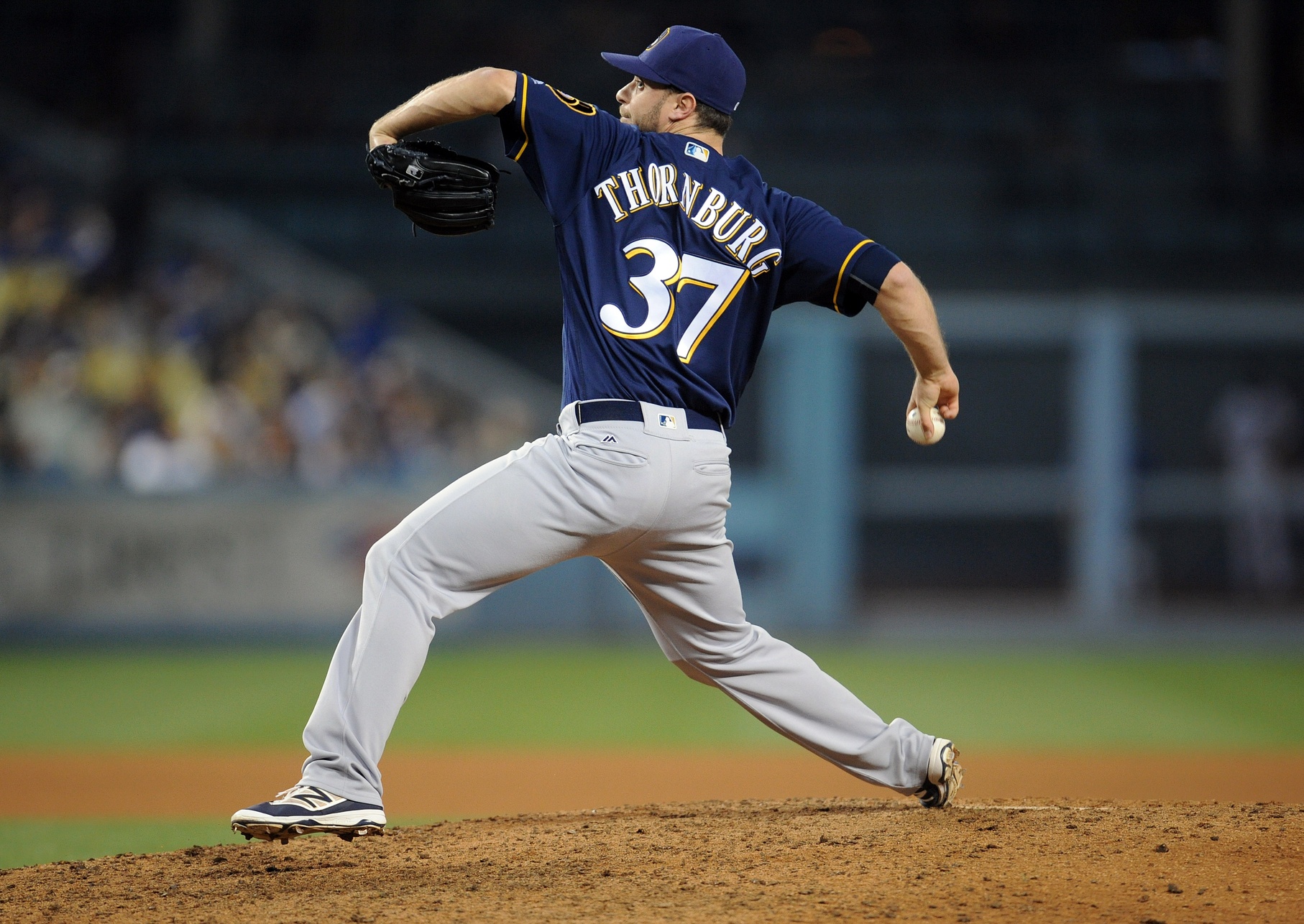When Will Smith went down with an injury, the closer’s role went to Jeremy Jeffress. On the outskirts, this made a lot of sense. Jeffress was linked in a number of trade rumors during the offseason, and giving him the primary closer role might increase his trade value. He also throws harder than most Brewers, averaging 96.54 MPH on his fastball last year. Plus, his numbers, in theory have been good, at least over the last two years. He’s had an ERA of 2.81 in 2014 and 2.65 in 2015.
This year, Jeffress’s ERA is at 2.84.
Most people will, therefore, think that Jeffress is having a solid year because ERA is still used widely in the mainstream. Even on shows such as MLB Now, a show, as Brian Kenny says, that is dedicated to the thinking fan, they still use ERA on a number of occasions even though ERA isn’t a very good stat.
The reason I bring this up is because, here, at Baseball Prospectus we use Deserved Runs Average (DRA) and DRA isn’t all that fond of Jeffress who has a 4.43 DRA. DRA, however, is very fond of Tyler Thornburg, who has a 2.63 DRA.
The reason this is interesting is because Jeffress and Thornburg have similar ERA numbers. Therefore, on the outskirts, it might seem as though they’ve been just as good this season. In reality, they haven’t.
| Name | ERA | DRA |
|---|---|---|
| Tyler Thornburg | 3.07 | 2.63 |
| Jeremy Jeffress | 2.84 | 4.43 |
The next question, therefore, is why does DRA like Thornburg but not Jeffress?
As Judge wrote earlier this year, it’s easy to assume that the “problem” is with DRA, but that in reality, the “problem” is probably not with DRA. DRA is rather telling us something interesting about Jeffress’ performance.
DRA, this year has been revised. I won’t go into the gory details but basically, you can split DRA’s details into three categories, Not-In-Play Runs (NIP Runs), Hit Runs, and Out Runs. NIP Runs are the, “runs saved or given up over average in walks (both intentional and unintentional), hit-batsmen, and strikeouts”. Hit Runs is basically the pitcher’s ability to minimize the damage on pitches that end up being hits. Out Runs is “the pitcher’s ability to generate typical outs on balls in play, usually by generating weak or directional contact. These constitute the majority of baseball batting events”.
Let’s now look at the difference between Thornburg and Jeffress (Negative is good, positive is bad):
| Name | DRA | NIP.Runs | Hit.Runs | Out.Runs |
|---|---|---|---|---|
| Tyler Thornburg | 2.63 | -3 | 0.1 | 0 |
| Jeremy Jeffress | 4.43 | 0 | 0 | 0.2 |
Jeffress and Thornburg’s Hit.Runs and Out.Runs are basically the same. The biggest difference is between their NIP.Runs. NIP.Runs is also, “the most valuable contributions a typical pitcher makes to run prevention.” This is significant when trying to understand why DRA thinks Thornburg has been better.
This also means that there isn’t any difference between the contact that Thornburg and Jeffress are giving up. Meaning that the difference is primarily between the pitchers walks, hit-batsmen, and strikeouts.
| Name | HBP | K/9 | BB/9 |
|---|---|---|---|
| Tyler Thornburg | 0 | 12.9 | 2.8 |
| Jeremy Jeffress | 3 | 6.8 | 2.3 |
While Jeffress has hit three more batters than Thornburg this year, the biggest difference between both pitchers is clearly in regards to their strikeout rates, where Thornburg is striking out almost twice as many hitters as Jeffress is striking out. Essentially, the entire difference between Thornburg and Jeffress’s DRA is from their strikeout rates. “Jeffress’s SO rate is fairly abysmal for a high-leverage reliever,” said, Judge in an email.
Judge is right. Amongst all qualified relievers, Jeffress ranks 137th in K/9, while Thornburg ranks 11th.
Thornburg currently has the best DRA among all Brewers pitchers. That’s not saying a whole lot because the Brewers pitching staff isn’t very good, but that does mean that he should probably be the one closing games right now. While the Brewers would ideally like to trade Jeffress this trade deadline, they could probably get more value from trading Thornburg. Teams aren’t stupid. In todays age, they know the value of striking out hitters, and a pitcher who has a strikeout rate similar to that of Craig Kimbrel will have more value than someone who has a strikeout rate similar to that of Cory Gearrin.

Perfect analysis. Sign Tyler through ’20, then make him the closer. Although Jeffress doesn’t rack up Ks his wicked movement and velocity are tough to center on. Sign him to ’20 also. Stockpiling talent is what it takes to win. He’s tougher than Krod.
Thanks! Both Jeffress and Thornburg are under team control until 2020, so I don’t see the Brewers signing them. Relievers are also very fickle therefore, if the Brewers can get a good offer I wouldn’t hesitate to trade them. That said if they don’t, I don’t have a problem holding onto to them.